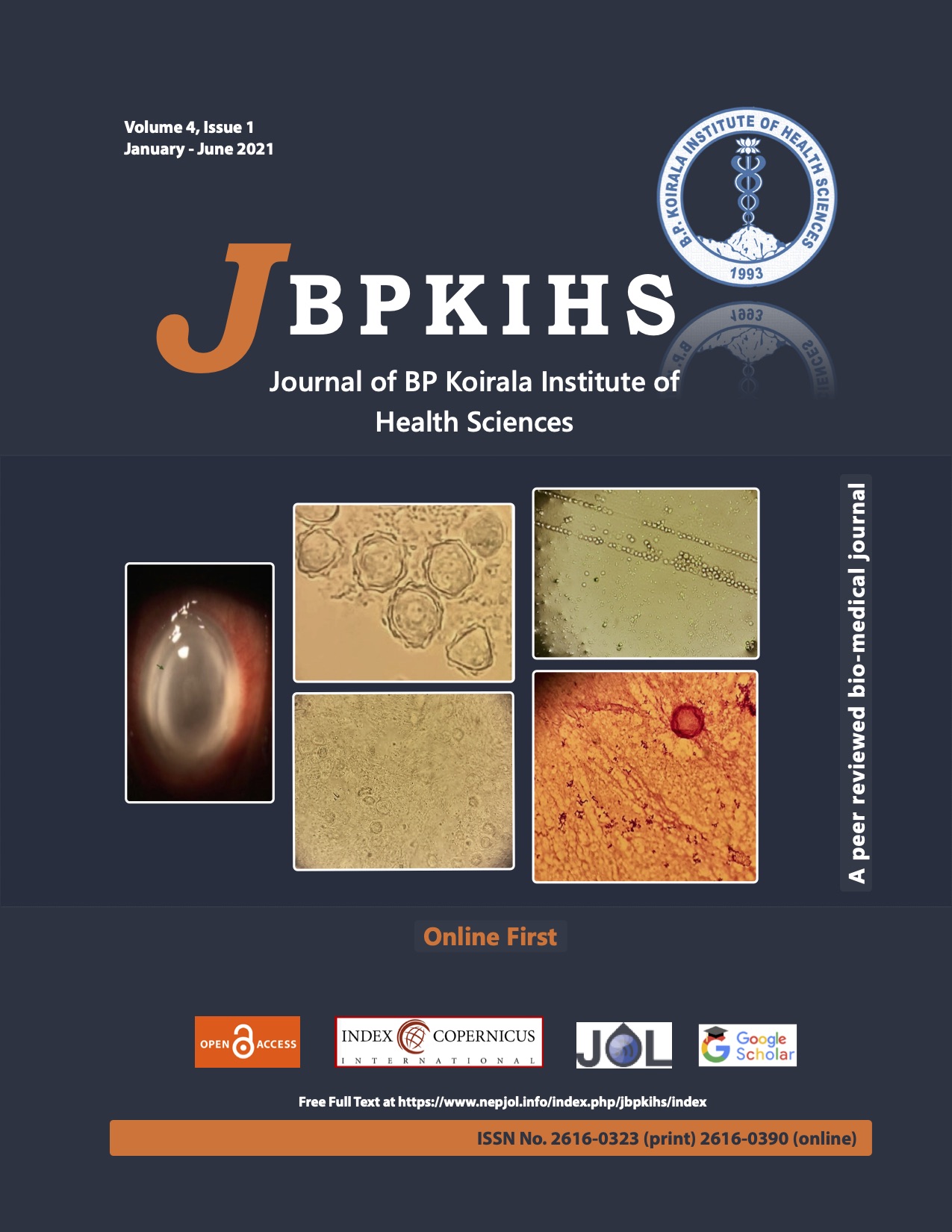Cerebral White Matter Hyperintensities in T2 Weighted Magnetic Resonance Images of Elderly Patients- Correlation with their Mental Status
DOI:
https://doi.org/10.3126/jbpkihs.v4i1.36107Keywords:
Fluid attenuation inversion recovery (FLAIR), Mini-mental status examination (MMSE) score, T2 weighted magnetic resonance imaging (T2W MRI), White matter hyperintensities (WMH)Abstract
Background: White matter hyperintensities (WMH), focal and/or diffuse areas of hyperintense signals on T2 weighted magnetic resonance imaging (MRI), are the most common incidental finding in elderly patients. However, their clinical significance is usually overlooked. We aimed to find out the correlation between the degree of cerebral WMH in MRI with the mental status of elderly patients, assessed by Mini-Mental Status Examination (MMSE) score.
Methods: This cross-sectional study was conducted for two years on eighty eligible elderly patients (> 60 years) referred to the Department of Radiology and Imaging for MRI of the brain. Demographic variables like age and sex, MMSE score, and MRI variables like location and number of WMHs were studied. The Pearson’s correlation coefficient was used to calculate the correlation between the extent of periventricular WMHs and MMSE score.
Results: A significant negative correlation (r = -0.78; p < 0.001) was found between decreased MMSE and the extent of periventricular WMH. A significant negative correlation was also found when periventricular hyperintensities were evaluated individually for frontal caps (r = -0.68; p < 0.0001), band opacities (r = -0.55; p<0.0001) and occipital cap (r = -0.59; p < 0.0001). However, subcortical WMH was not significantly corelated with MMSE score (r = +0.018, p = 0.0897).
Conclusion: A significant negative correlation exists between the extent of periventricular WMH seen at brain MRI with cognitive decline in elderly subjects. However, no such correlation exists between subcortical WMH and mental status.
Downloads
Downloads
Published
How to Cite
Issue
Section
License
This license enables reusers to copy and distribute the material in any medium or format in unadapted form only, for noncommercial purposes only, and only so long as attribution is given to the creator.




